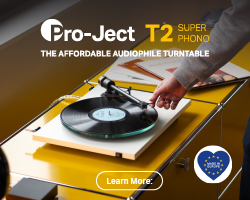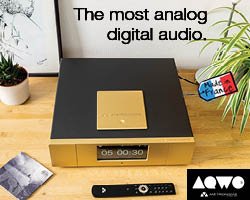Design and Construction
I first came across these unusual ‘speakers a few years back when looking for replacements to a pair of Lumley AB300’s I owned, as I was after a high efficiency loudspeaker without some of the stereotyped high efficiency design colourations, and was lucky enough to find a pair courtesy of Jim at Audiolincs in Leicestershire. A 2 ½ hour drive later had me sat in his listening room with a pretty mammoth pair of loudspeakers facing me from about 9 feet away. Build quality on these is up there with the very best. Solid wood (not veneer) panel fronts are used for the substantial edgings with veneer to the main panels. The panels themselves are very substantial and made from ¾ inch thick ply, heavily braced.
Design is unusual and complex featuring (in the case of the review pair) a Lowther DX4 mid driver with the central “whizzer cone” removed and instead fitted with a damping plug. A simple 6KHz crossover (the only one in the design) feeds HF through to a bespoke Tommy Horning designed tweeter complete with its own wooden horn enclosure. This is the same “Lotus” tweeter fitted to many of Horning’s high end speakers and is a work of art on its own. Round the back (see photos) are featured not one but TWO 12 inch Beyma short throw bass units, which are designed to be inward firing. The drivers are all loaded into a very complex folded horn enclosure with each time aligned to avoid phase shift differences, which fires out through the base of the speakers.  As mentioned, a very unusual and complex design, yet beautifully simple in its electronic approach. As the DX4 mid unit begins to roll off below 200Hz, the bass units start to come in, all without any crossovers necessary, and pretty seamless too (more on that later). Sensitivity is a very decent 99dB for 1w at 1m, with minimum impedance given as 6.1Ohms and nominal impedance as 8Ohms, so these are an exceptionally amp friendly load and very suited to valve amplification. Just a handful of watts is therefore needed to really get them signing, although they’re rated to handle up to 100w/ch.
As mentioned, a very unusual and complex design, yet beautifully simple in its electronic approach. As the DX4 mid unit begins to roll off below 200Hz, the bass units start to come in, all without any crossovers necessary, and pretty seamless too (more on that later). Sensitivity is a very decent 99dB for 1w at 1m, with minimum impedance given as 6.1Ohms and nominal impedance as 8Ohms, so these are an exceptionally amp friendly load and very suited to valve amplification. Just a handful of watts is therefore needed to really get them signing, although they’re rated to handle up to 100w/ch.
I’ve never really been a fan of Lowther drivers. They have a reputation to get “shouty” or buzzy when things start to pick up in the frequency levels and that’s always put me off. I’ve never really listened to a pair of Lowthers in a full range design by themselves that really convince either. What Tommy Horning has done is therefore very clever. He’s taken the traits of speed and transparency for which the Lowther units are renowned and let other units handle the frequency extremes. The result is a true 3-way full range design which is rated at a conservative 25Hz to 22.5KHz, although in-room response suggests a low frequency response much lower than this! Round the back at the bottom are two substantial gold plated binding posts and a rather strange cone shaped screw in plug called an “acoustic variator”. Apparently this allows tuning of the bass. Open it up and it gets softer and fruitier. Close it up and everything remains taught and fast. Personally, I don’t see the point of opening it up as everything just gets muddy and overblown, so I left these firmly in.
These are no lightweights. Each ‘speaker tips the scales at around 68Kg and it takes two strong individuals to consider moving them safely, for the sake of your back and the ‘speakers themselves. Once they’re in place though, it’s relatively easy to shuffle them into position or move them providing they don’t need to be lifted in order to get them positioned.
Sound Quality
I wasn’t really knowing what to expect, but have to admit that on first audition I was slightly apprehensive, just looking at the size of the bass drivers and knowing how lightning fast the mid unit was likely to be with transients. Sounds daft, but I was actually intimidated by these. I was like most people (I suspect), more used to boxy sounding ‘speakers of more conventional design, which do tend to all have similar sonic traits, and for the most case can be separated into those that place you up front of the sound stage and those that sit you nearer the back of the concert hall, perhaps in the rear stalls. I’ve always found conventional two or two and half way tall boxes to be apparent within the performance…ie they always sound slightly boxy and obvious as the source of the music.
First up was some simple acoustic music accompanied by female vocals. The presence and transparency were quite stunning. Close your eyes and the singer was sitting in front of you with a guitar gentle strumming somewhere off to her left and slightly behind. It was pretty a pretty surreal experience for someone not used to this level of transparency. I decided to up the ante, and put on Bob Marley’s Exodus, and turn the wick up a little (well, perhaps allow at least 6 watts through!). The effect was astonishing. I was no longer sat half way back listening to gentle acoustic ballads, but thrust right up there to a big wide soundstage with sensational bass really underpinning the music and some real sparkle and zip to the treble. It wasn’t all good though. These are ultimately revealing loudspeakers and if there’s a fault in the recording, you’ll hear it and it will start to annoy, whereas with less transparent designs you might just get away with it and be able to relax into the music. I found parts of the recording slightly edgy but knew that the ‘speakers themselves weren’t the source of the problem, the recording was.
Switching tack, I decided to try some full scale orchestral music, something which most hifi systems struggle to get to grips with due to the dynamic range and complex harmonics in the music. I chose Richard Strauss’s Also Sprach Zarathustra which many of you will recognise as being used in the film “2001 – A Space Odyssey”. The opening track started with the usual build up of the melody with the trumpets blaring out the “dahhh dahhh dahhh…DEDAHHH” followed by the tympani crashing in. It was at this point that I jumped and the cup of tea I had in my hand at the time ended up on my lap giving me close to a second degree scald! The tympani didn’t just come in with the usual “boing boing boing” I was used to with more conventional ‘speakers, but with a true-to-scale WALLOP with lovely trailing edges on the decay. This was followed by the massive and low organ note which underpins the opening piece. I swear I could feel my innards starting to vibrate with the low organ note that contained obvious harmonics well below hearing threshold. Bass is truly stupendous. Reggae fans would love these things!
As a whole, these impress. Far from the mismatch I was expecting, the performance was nigh on seamless. The degree of thought and design Tommy Horning has put into this design shows, and shows very clearly. They sound “different” to conventional ‘speakers in that they have a more open and airy presentation which varies with the music being played. You can be in the rear stalls for some pieces and up there with the band in others. They sort of envelop you in music in a way that’s truly engaging but I suspect that they won’t be to everyone’s tastes for three main reasons: 1) Size…unless you have a room at least 15 to 20 feet long, these may overwhelm and the foot print is pretty big at 470 by 360mm; 2) cost: at close to £11K they’re not cheap by anyone’s standards although shopping around can find you a pair of these latest “Ultimate” editions for between £4 and £5K if you’re lucky 3) Presentation: They are ruthlessly revealing.
Whilst personally I like my ‘speakers to be revealing, it adds the problem that any weaknesses in your kit will be highlighted, and this is exactly what the Agathons do: they don’ play nicely with poorly recorded albums nor poorly implemented sources. If you don’t mind this, have the space and the budget, then they are an astonishing pair of loudspeakers only rivaled by something like the mighty MBL 116F’s, against which they share a similar detailed presentation with similar architectural bass but a different presentation. I keep coming back to the bass with these, and when considered against anything else I’ve listened to, to date, their huge dynamic range and output makes them an excellent choice for large orchestral works or rock alike. Yet feed them with gentle acoustic or blues and they switch like the Jekyll and Hyde character they are into a beguiling and atmospheric listen.
Not to everyone’s tastes’, but certainly to mine and highly recommended with that caveat.
Technical Specifications
Dimensions (HWD, mm): 1150 x 360 x 470
Recommended Power: 5-100 Watt
Frequency Response: 25Hz to 22,500KHz
Weight: 68 kg.
Impedance: 8 Ohm
Sensitivity: 99 dB
Special Feature: Hørning Acoustic Variator
Want to read more hifi reviews?







































































































































































Thanks for finally writing about > Horning Agathon Ultimate
Loudspeakers | Hifi Pig < Loved it!
That was really a very well described experience of yours. Selection of loudspeaker is a tough job, which can give good sound with affordable price. You must confirm first before buying that exactly for which purpose you want them, so that you can chose accordingly.
Your experience exactly mirrors what I heard when I listened to these speakers. This is the first review I’ve seen of them. Thanks for the info.
I’ve had a pair of Agathon Ultimates for a long time. They are wonderful at conveying a natural acoustic that feels very nicely open both in space and in the way the instruments and voices emerge as free bodies in space and not constrained within an artificial box. A little like Quads but with body and heft to the sound. Expensive perhaps, classics definitely. They work well quite close to the wall as well which helps in accommodating within a British room.